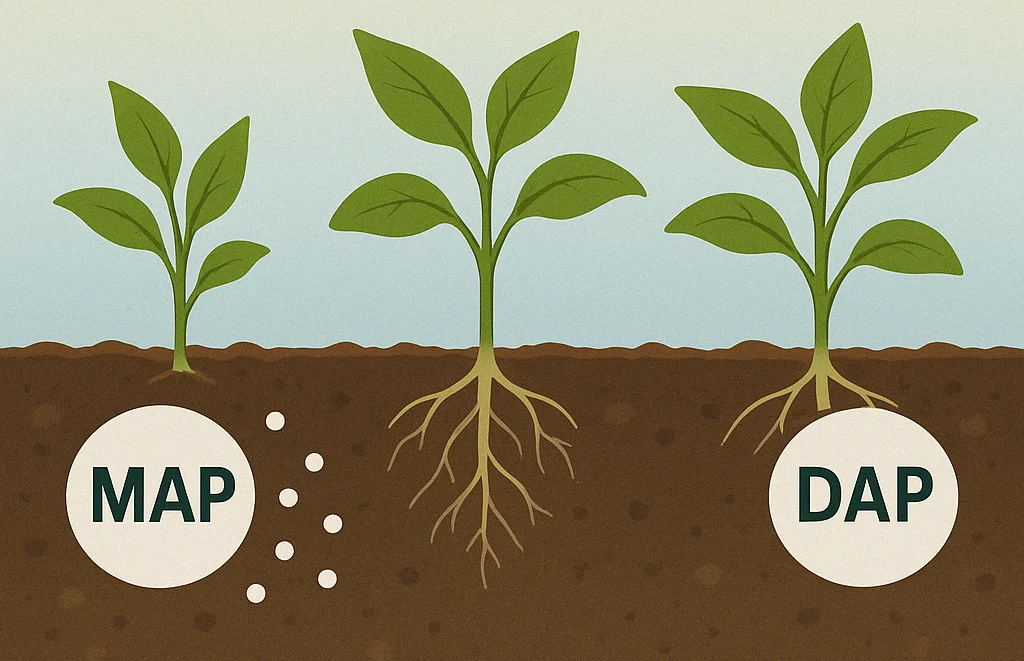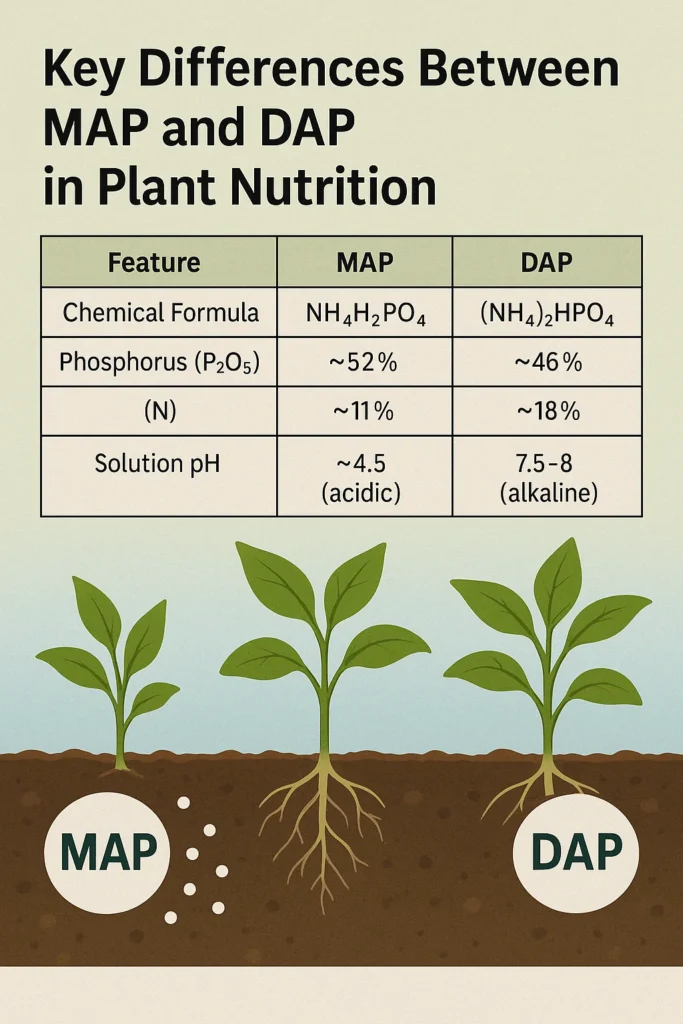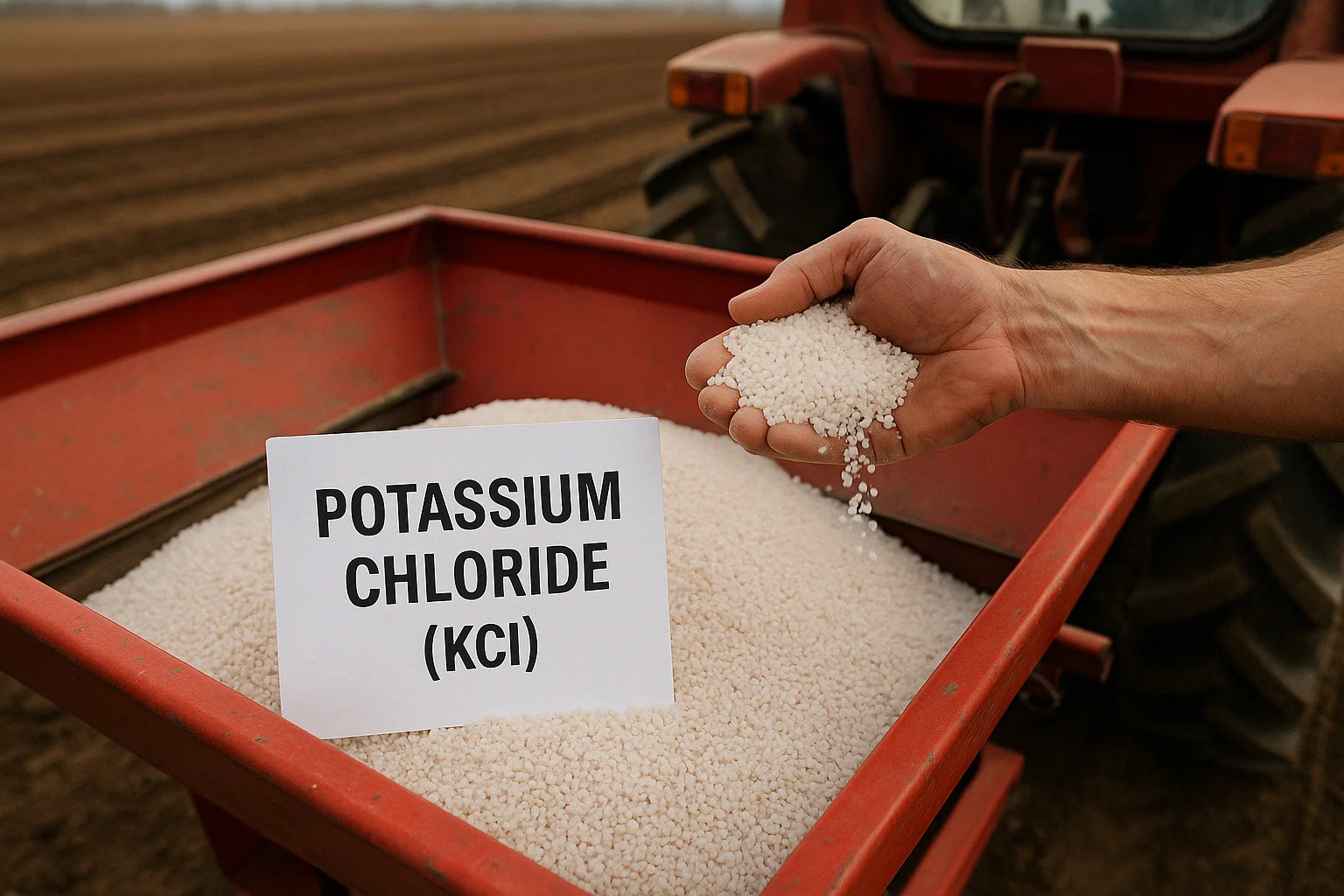
Key Differences Between MAP and DAP in Plant Nutrition
Introduction:
Phosphate fertilizers play a crucial role in crop productivity and soil health. Among the most widely used phosphate fertilizers are:
Mono-Ammonium Phosphate (MAP) and Di-Ammonium Phosphate (DAP).
While both supply phosphorus and nitrogen, they differ significantly in chemical structure, soil behavior, solubility, and application timing. This article provides a scientific comparison to support better fertilizer selection.
Chemical Composition & Characteristics:
| Feature | MAP | DAP |
| Chemical Formula | NH₄H₂PO₄ | (NH₄)₂HPO₄ |
| Phosphorus (P₂O₅) | ~52% | ~46% |
| Nitrogen (N) | ~11% | ~18% |
| Solution pH | ~4.5 (acidic) | ~7.5–8 (alkaline) |
| Water Solubility | Very high | High |
Soil Impact:
- MAP has a mildly acidic effect, making it ideal for alkaline soils where it enhances nutrient uptake.
- DAP temporarily increases soil pH around the granule, which may limit micronutrient availability in alkaline soils but is suitable for acidic ones.

Application Timing & Use:
- MAP is preferred during early stages of plant development—particularly for root establishment.
- DAP is commonly used in open-field farming, especially for crops requiring more nitrogen at the start.
Technical Considerations:
- In greenhouse farming and fertigation systems, MAP is often favored due to its full solubility and favorable pH.
- In rainfed agriculture or low-acidity soils, DAP is generally more cost-effective and practical.
Conclusion:
Choosing between MAP and DAP depends on multiple factors: crop type, soil characteristics, irrigation method, and growth stage. Neither is universally superior—the best choice varies case by case.
Professional consultation and soil testing are essential for optimal results.






